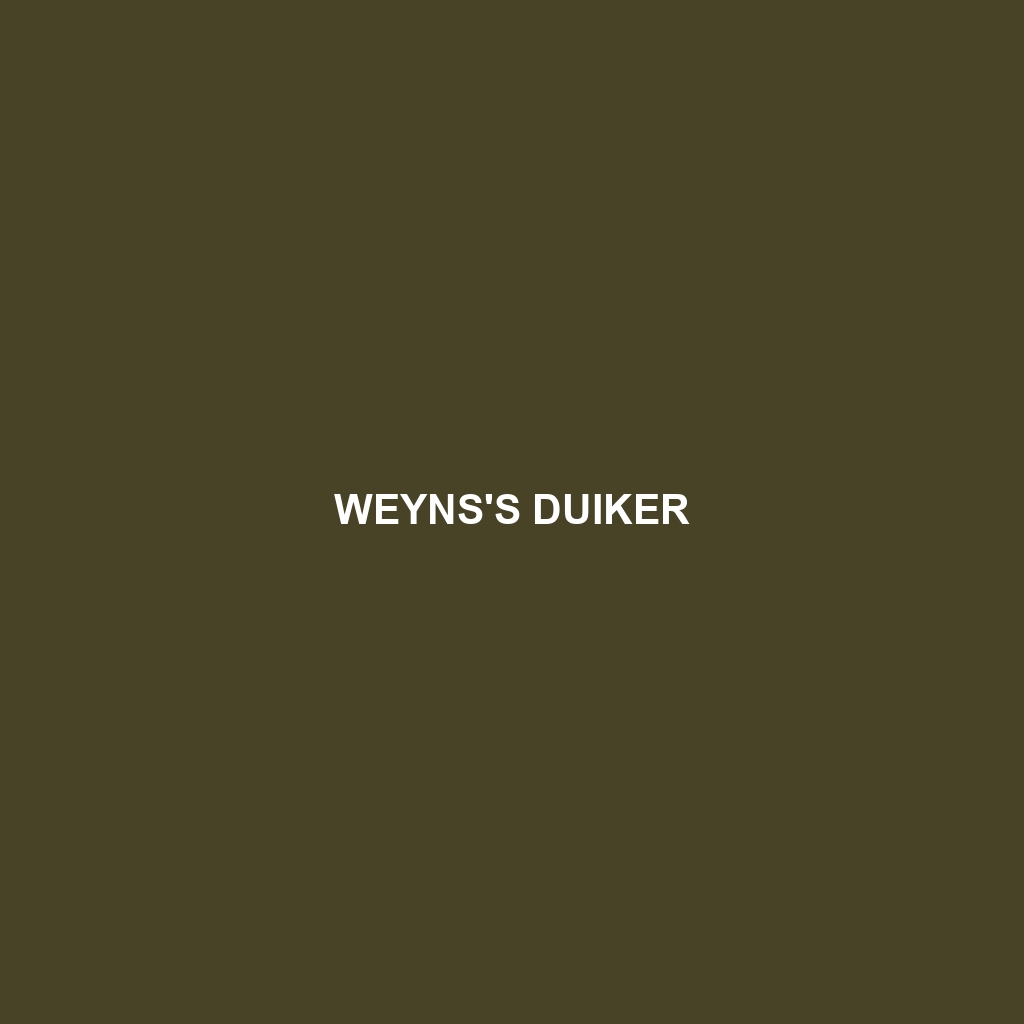Red-flanked Duiker: A Comprehensive Species Description
Common Name: Red-flanked Duiker
Scientific Name: Cephalophus rufilatus
Habitat
The Red-flanked Duiker is primarily found in the dense tropical forests and savannahs of Central and West Africa. This elusive species prefers areas with thick undergrowth, which provides ample cover from predators. Geographic locations include parts of countries such as Cameroon, Democratic Republic of the Congo, and Nigeria, making it a vital part of the forest and woodland ecosystems.
Physical Characteristics
The Red-flanked Duiker is a small antelope that typically measures about 75 to 100 centimeters in length, standing at a height of approximately 50 to 60 centimeters at the shoulder. Their most distinctive feature is the reddish-brown coloration on their flanks, which contrasts with the more muted tones of their body. They possess short, stocky legs and a slender body, with males carrying small, sharp horns that can grow up to 18 centimeters in length. The unique color and size make them an attractive focus for wildlife enthusiasts and photographers.
Behavior
This species is primarily solitary or found in small groups, exhibiting crepuscular behavior, being most active during dawn and dusk. Red-flanked Duikers are known for their agility and swift movements, which help them navigate through dense foliage. They communicate using a range of sounds and visual cues, especially during mating seasons or when alerting others to potential threats. Their secretive nature often leads to them being elusive in the wild, adding to their mystique.
Diet
The Red-flanked Duiker has a herbivorous diet primarily consisting of leaves, fruits, and shoots. They are selective foragers and often target young plant growth, which is nutrient-rich. Common food sources include berries and other vegetation found in their forest habitat. Their feeding habits play a crucial role in seed dispersal, contributing to the health of their ecosystem.
Reproduction
Reproduction in Red-flanked Duikers typically occurs throughout the year, although there may be peaks during certain seasons depending on local environmental conditions. After a gestation period of approximately 7 months, females usually give birth to a single fawn. Offspring are hidden in dense underbrush for protection during their early weeks, with the mother returning periodically to nurse them. Notable behaviors include mothers teaching their young how to forage and evade predators.
Conservation Status
The Red-flanked Duiker is currently listed as ‘Vulnerable’ by the International Union for Conservation of Nature (IUCN). Habitat destruction due to logging, agriculture, and human encroachment poses significant threats to their populations. Conservation efforts are critical to ensure the survival of this species, along with habitat protection and anti-poaching initiatives.
Interesting Facts
One fascinating fact about the Red-flanked Duiker is its ability to jump up to 2 meters high, a skill that helps them evade predators in their dense forest environment. They also have an exceptional sense of smell, which aids them in detecting food and potential dangers.
Role in Ecosystem
The Red-flanked Duiker plays a crucial role in its ecosystem as both a herbivore and prey species. By feeding on a variety of plants, they help maintain plant health and promote biodiversity through seed dispersal. Furthermore, as a prey species, they support larger carnivores within their habitat, thus contributing to ecological balance.
